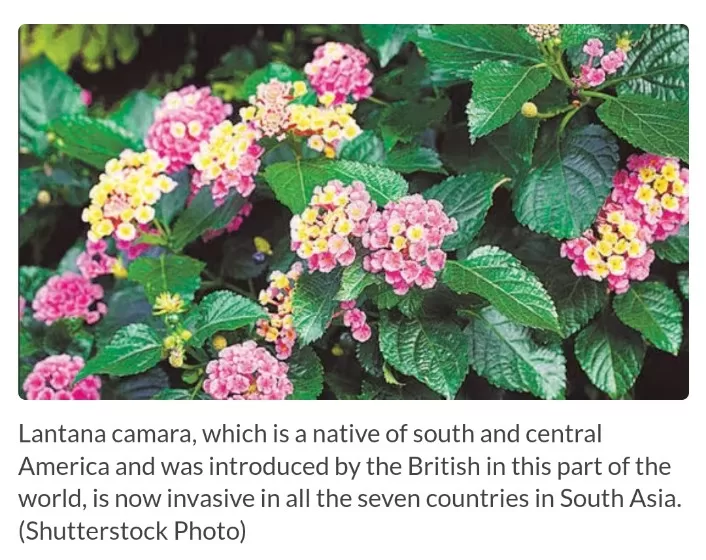In a landmark collaborative effort, scientists from India and six other nations have meticulously documented 241 invasive alien plant species in South Asian countries, marking a significant stride in understanding the ecological landscape. This comprehensive study, detailed in the peer-reviewed journal ‘Biological Invasions,’ not only sheds light on the alarming invasion scenario but also offers crucial insights into biodiversity conservation and climate change impacts.
The research, led by Anzar A Khuroo, an associate professor of Botany at the University of Kashmir, emphasizes that India, with its vast land area, has encountered the highest number of invasive alien plants—185 to be exact. Bhutan follows closely with 53, while Sri Lanka and Bangladesh stand at 45 and 39, respectively. The lowest count is in the Maldives, with just 15 invasive plant species.
Southern America emerges as a major contributor to invasive plants in the region, suggesting that the tropical climate plays a pivotal role in the establishment and spread of these species. Of the 241 identified species, 142 were introduced from Southern America, followed by Northern America (66), Africa (42), and Europe.
Key invasive species, such as ‘Lantana camara,’ originally native to South and Central America and introduced by the British, have become invasive across all seven South Asian countries. Additional species like Parthenium hysterophorus, Pontederia crassipes, and Leucaena leucocephala have invaded six countries.
The study’s implications extend beyond identifying invasive species; it underscores the urgent need for cautious approaches, especially in dealing with plants from regions like Southern America. The findings also highlight the growth forms of invasive species, with 65% being perennials, 34% annuals, and 1% biennials. Herbs dominate the growth forms, accounting for 146 species, followed by shrubs (38), trees (30), climbers (20), subshrubs (4), and vines (3).
Given the ecological and economic implications, this study serves as a foundational resource for further research in areas where data on invasive plants and animals are limited. Aligning with global biodiversity goals, particularly Target 6 of the Kunming-Montreal Global Biodiversity Framework, the study aims to reduce the impacts of Invasive Alien Species (IAS) by at least 50% by 2030.






